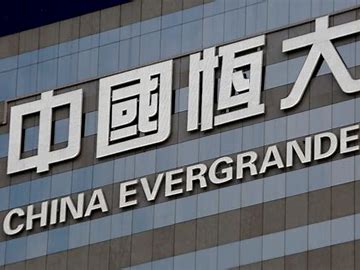
The Evergrande solvency crisis in China continues as well as solvency issues with other companies, banks, and local governments. Nothing has changed.
MSN Money reported earlier today:
The Evergrande Group found its plan to sell a majority stake in its property services unit to Hopson Development delayed after failing to gain approval from the Guangdong provincial government overseeing the company’s restructuring, according to Reuters.
This keeps Evergrande, the world’s most indebted property developer, facing dues of over $300 billion, away from the $2.6 billion it would have earned from the deal in wake of a Saturday deadline on the 30-day grace period following its missed bond payment in September.
Along with this shelved deal, China saw its real estate sector take further hits. Sinic Holdings declared default and Kaisa Group saw its credit rating downgraded. This follows announcements that China Properties Group defaulted on a loan and that Fantasia could not make recent payments, along with other companies facing credit rating drops.
Despite the recent sequence of events, the People’s Bank of China, the country’s central banking authority, told creditors to stay calm.
“Economic growth has been slowed down a little bit, but the trajectory of economic recovery remains unchanged,” Yi Gang, the bank’s governor, said on Saturday. “Overall, we can contain the Evergrande risk.”
China says they can contain the Evergrande risk but can they contain the risk of the other companies facing default, or the banks that hold trillions in off-balance sheet liabilities, or the off-balance liabilities of its local governments?
As noted above, Evergrande is the largest property management company in the world based on liabilities but there are other companies facing similar fates in China. It is five times the size of Lehman which was involved in the 2008 US property crisis.
TGP reported in May 2019 that there simply were not enough people in China where massive property complexes were being built that could afford to live in these units.
Therefore many properties throughout China sat unoccupied, and there is a cost to this. As we noted, Bloomberg reported in September 2018 there are numerous companies in similar share as Evergrande:
Cash-to-short-term debt levels at more than 80 publicly traded real estate companies tracked by Bloomberg were 133 percent on average in the first half, the worst since the first six months of 2015 and down from 297 percent a year earlier. Almost a quarter of developers sport a ratio below 50 percent.
In addition, Bloomberg noted:
But while business has been booming, developers have also been piling on the debt. Firms have been selling more bonds in the domestic market — and at the cheapest rates as investors shrug off default concerns. Those with dollar-denominated obligations, meanwhile, face higher borrowing costs as the U.S. Federal Reserves continues on its tightening path.
The Gateway Pundit warned that the amount of debt related to China’s over-development is massive. The total amount is unknown with S&P estimating the amount of debt not reported by local communities being over $6 trillion:
China may be sitting on a hidden debt pile of as much as 40 trillion yuan ($6 trillion), concealed off-balance-sheet by the country’s local governments, according to research from S&P Global Ratings.
Many local governments in China raise debt and hold it off their balance sheet, in order to avoid lending limits imposed by central authorities. S&P says that this is a growing problem within the country, and that the amount of debt held this way has likely ballooned in recent years.
TGP reported how a tremendous economic blowup may be imminent:
Not only is the level of hidden debt held by local governments in the world’s second largest economy rising, but so too is the risk of those debts being defaulted on. Much of the debt is held by so-called local government financing vehicles (LGFVs), and S&P reports that central government may be willing to let these vehicles file for bankruptcy in the future.
“Default risk of LGFVs is on the rise. China has opened up the possibility of insolvent LGFVs filing for bankruptcy, but managing the default aftermath is a formidable task for top leadership,” the report noted….
The country’s total non-financial sector debt, which includes household, corporate and government debt, will surge to almost 300% of GDP by 2022, up from 242% in 2016. Fears abound that if this debt pile continues to grow, a spectacular blow up could be imminent.
Recently we reported that the local government debt in China off-balance sheet is closer to $8 trillion:
China’s banks are also at risk. Not only do they hold the debt of much of the property investments in China, but they also are engaged in other off-balance sheet instruments known as WMP’s which increased by over $1 trillion in 2015 alone per the Wall Street Journal.
Chinese banks collectively have an enormous balance sheet, enough of a worry for investors on its own. Then there is the off-the-books shadow of a balance sheet, which is looming increasingly large.
The shadow is cast by the surge in issuance of so-called wealth-management products, or WMPs, high-yielding investments sold to bank customers looking for yields higher than what China’s low deposit rates offer. This may sound familiar. A similar surge in shadow-banking products in the early part of the decade caught investors and regulators unaware.
With trillions in off-balance sheet or risky debt, China is in horrible shape. This has been coming for some time.
The post “Overall We Can Contain the Evergrande Risk” Says China’s Central Bank But What About Other Companies, Banks and Government Risks? appeared first on The Gateway Pundit.


